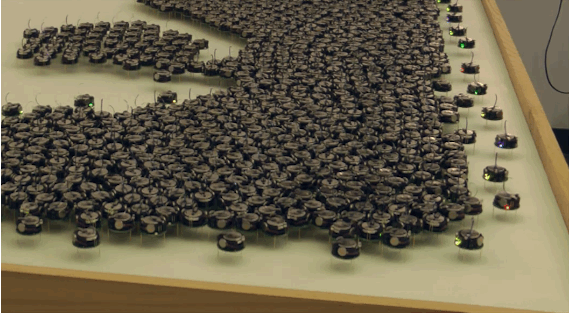Swarms Fortnight

If you have ever watched adorable boffin Dr. Leo Fitz on Agents of Shield whip out his pack of little drones who promptly zoom out and form a barrier or attack a Bad Person/Alien, you’ve experienced the appeal of swarms: Robot insects- individually not too bright, collectively brilliant. Unfortunately “swarm" means different things to different people — to most people, “swarm" usually means “lots of robots” or “lots of small identical robots that group together to transform themselves into an interesting shape.” Roboticists, especially those who work in artificial intelligence, use the term “swarm" the way biologists do: to describe a collective of identical (homogeneous) individuals who accomplish tasks by sheer dint of numbers and don’t directly communicate. In other words, lots of cheap robots who can do what a single expensive robot can do and without the chatter. We use the term “collective" to emphasize that the group of robots are not a team- the robots (just like insects) generally don’t know that any others exist. Swarms don’t have a centralized brain; that’s called "centralized control" which seems really useful until you consider how Anakin Skywalker disabled all the soldier robots in The Phantom Menace by taking out a single Trade Federation’s ship; the centralized controller is the weakest link. Roboticists refer to the changing shape concept as "programmable matter” or “lattice programming” or “don’t hold your breath, we’re a long way away from that." Sure, ants can form lines or can make group themselves into floating balls so that they can cross streams, but that’s not the same as micro robots suddenly making themselves into a bridge or a coffee cup or sprouting legs or replicas of people like T-800. So what about situations where you might have lots of robots that aren’t all identical or don’t act like insect collectives? That would be the field of intentionally cooperative multi-robot systems (MRS). And what about robots change themselves a little bit like transformers? That is the field of reconfigurable robots. This fortnight RTSF will explore robot swarms in science and science fiction, with a touch of programmable matter, reconfigurable robots, and the bigger picture of MRS thrown in.
- Robin
